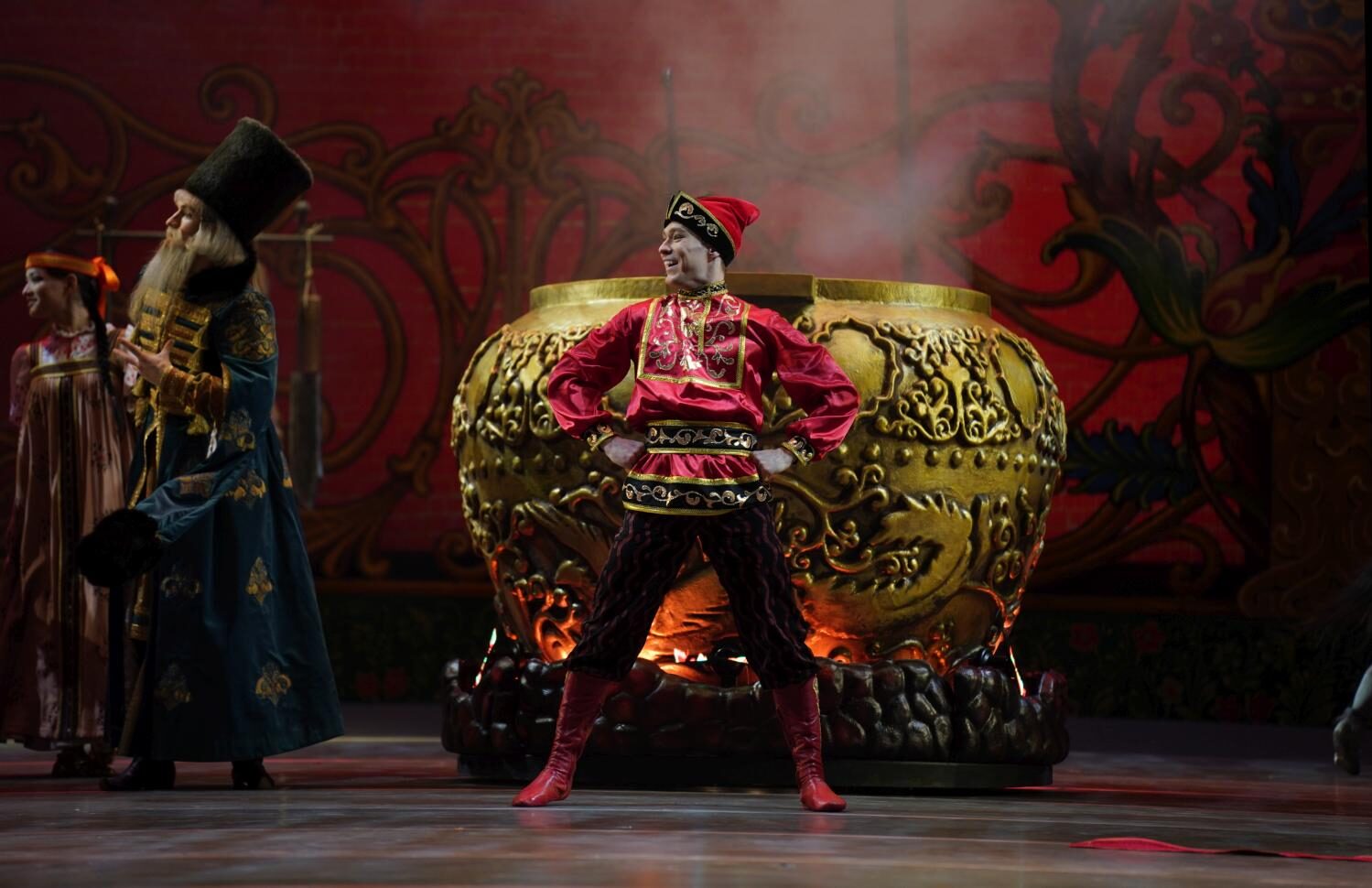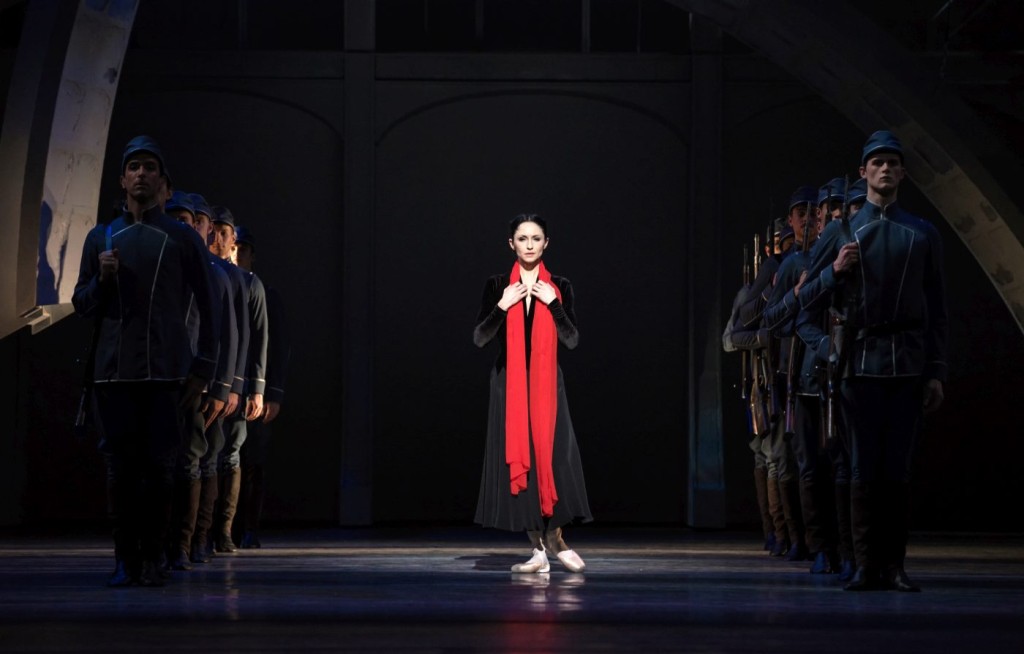“Mata Hari”
Dutch National Ballet
Dutch National Opera & Ballet
Amsterdam, Netherlands
February 13, 2016
by Ilona Landgraf
Copyright © 2016 by Ilona Landgraf
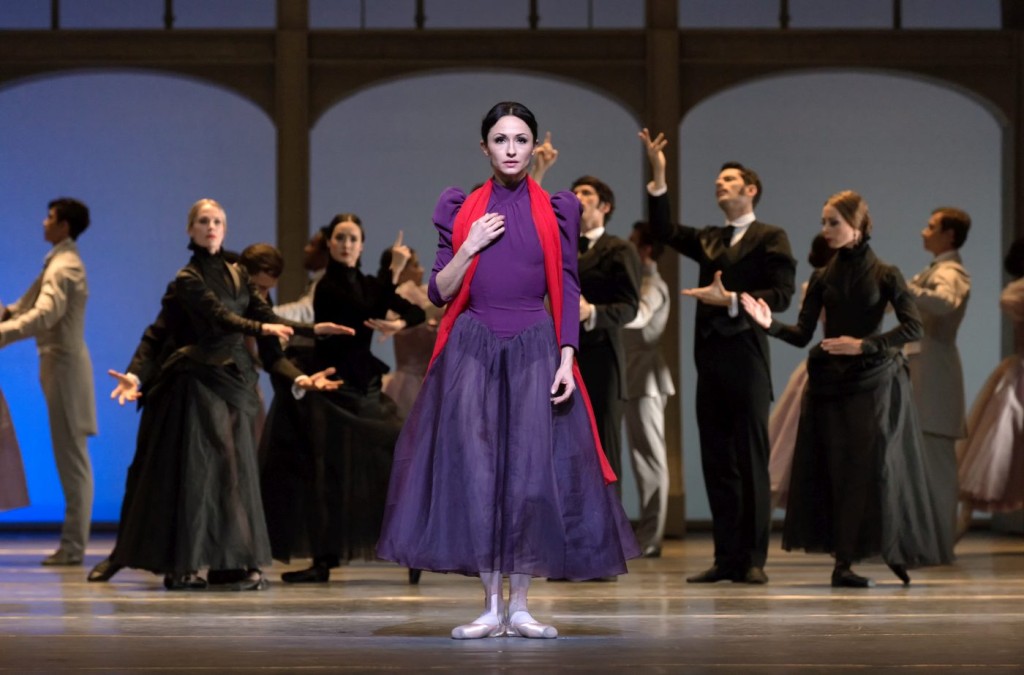 Dutch National Ballet’s YouTube trailer for its new ballet “Mata Hari” reveals two pythons leisurely encircling a ballerina. No need to worry though, no reptiles appear on stage, and there is no snake dance either. Besides that wouldn’t have been appropriate anyway because Mata Hari, whose performances as bayadère during the Belle Époque in Paris made a great stir, was never a snake charmer but rather a charmer of men.
Dutch National Ballet’s YouTube trailer for its new ballet “Mata Hari” reveals two pythons leisurely encircling a ballerina. No need to worry though, no reptiles appear on stage, and there is no snake dance either. Besides that wouldn’t have been appropriate anyway because Mata Hari, whose performances as bayadère during the Belle Époque in Paris made a great stir, was never a snake charmer but rather a charmer of men.
Ted Brandsen, artistic director of the Dutch company, has traced the life of the famous Dutchwoman in his recently premiered story ballet. Mata Hari was born in 1876 as Margaretha Geertruida Zelle. Her parents separated when she was fourteen. Her mother died one year later; her father married again, but Margaretha was brought up by relatives.
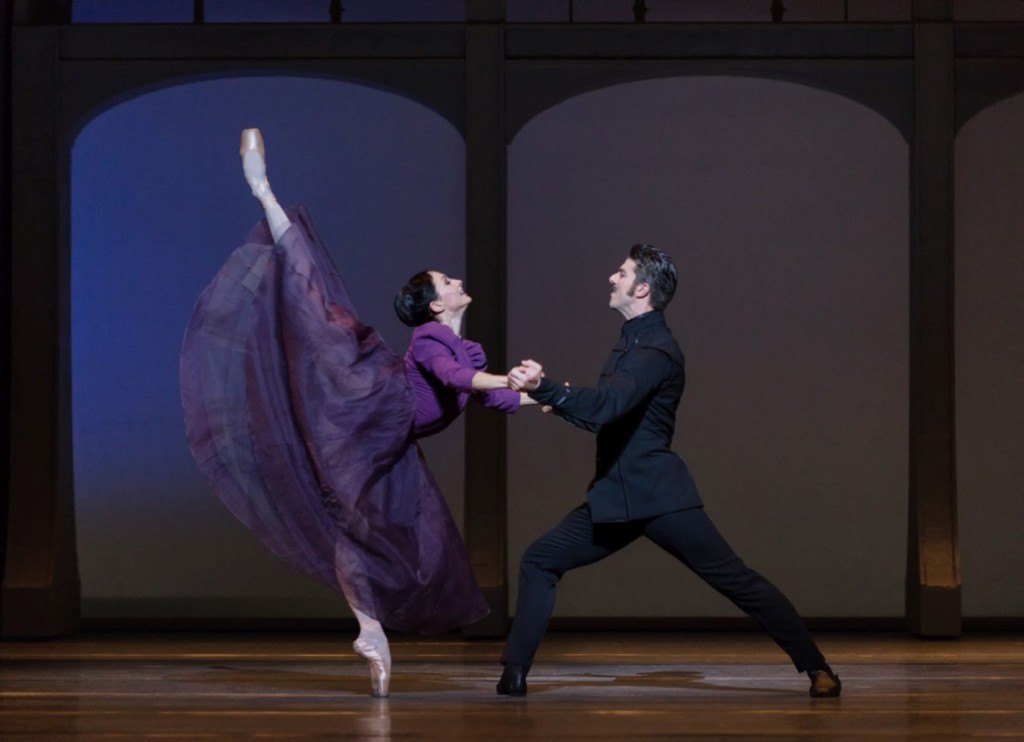 Just nineteen years old, she married a Dutch officer, Rudolf MacLeod, who was twenty years older. Soon wedlock turned sour. When MacLeod was deployed to Dutch East Indies, the little family, including a son, Norman, who had been born, moved to Java. But not even the birth of a daughter one year later could restore conjugal peace. The situation was exacerbated when Norman died of poisoning. Having spent five years in Indonesia, the pair with their daughter finally returned to Amsterdam in 1902 and separated. The daughter was awarded to her mother but by mutual agreement stayed with her father instead. MacLeod didn’t pay alimony though, hence Margaretha had to worry about making a living on her own. She moved to Paris and tried her luck as a model for painters but wasn’t successful.
Just nineteen years old, she married a Dutch officer, Rudolf MacLeod, who was twenty years older. Soon wedlock turned sour. When MacLeod was deployed to Dutch East Indies, the little family, including a son, Norman, who had been born, moved to Java. But not even the birth of a daughter one year later could restore conjugal peace. The situation was exacerbated when Norman died of poisoning. Having spent five years in Indonesia, the pair with their daughter finally returned to Amsterdam in 1902 and separated. The daughter was awarded to her mother but by mutual agreement stayed with her father instead. MacLeod didn’t pay alimony though, hence Margaretha had to worry about making a living on her own. She moved to Paris and tried her luck as a model for painters but wasn’t successful.
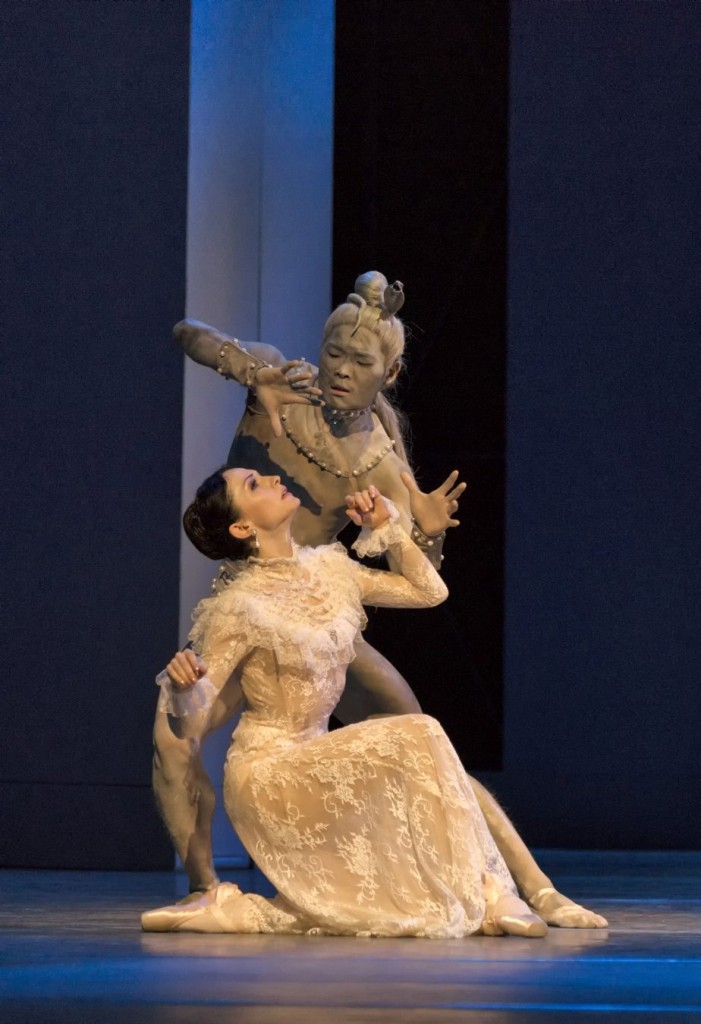 In 1903, inventing herself as the exotic, frivolous bayadère called Mata Hari on Parisian salon stages, her life improved. She managed to create a mysterious, seductive aura which made her audience, the refined society of Paris, who were nonetheless hungry for erotic stimuli, fall at her feet. Her fictional biography, that of being a child of Brahmins, raised as a temple dancer for the Hindu deity Shiva, transformed what might otherwise be easily considered as indecent into a spiritual ritual.
In 1903, inventing herself as the exotic, frivolous bayadère called Mata Hari on Parisian salon stages, her life improved. She managed to create a mysterious, seductive aura which made her audience, the refined society of Paris, who were nonetheless hungry for erotic stimuli, fall at her feet. Her fictional biography, that of being a child of Brahmins, raised as a temple dancer for the Hindu deity Shiva, transformed what might otherwise be easily considered as indecent into a spiritual ritual.
Mata Hari’s boldness in dancing almost nude – only her breasts were covered by a bra – at once stirred delicious scandal. At last she was a sensation. Big variety theaters contracted her; she toured European capitals; one engagement followed another. Once penniless, Mata Hari now lived a life of luxury: five-star hotels, a chic flat in Paris, jewelry, dresses. Some of this, in addition to her show earnings, was financed by her admirers, high-ranking officers, diplomats, financiers and allegedly also a son of the German Emperor Wilhelm II.
Gabriel Astruc became her booking agent, but soon she faced fierce competition from other dancers. Some of them copied her oriental style, others attracted with novelties. Isadora Duncan, a contemporary of Mata Hari, became increasingly popular while Mata Hari’s star dimmed. An attempt to dance with Diaghilev’s Ballets Russes failed. Astruc abandoned her as well. Eventually the outbreak of World War I terminated her career. An engagement at Berlin’s Metropol-Theater was canceled.
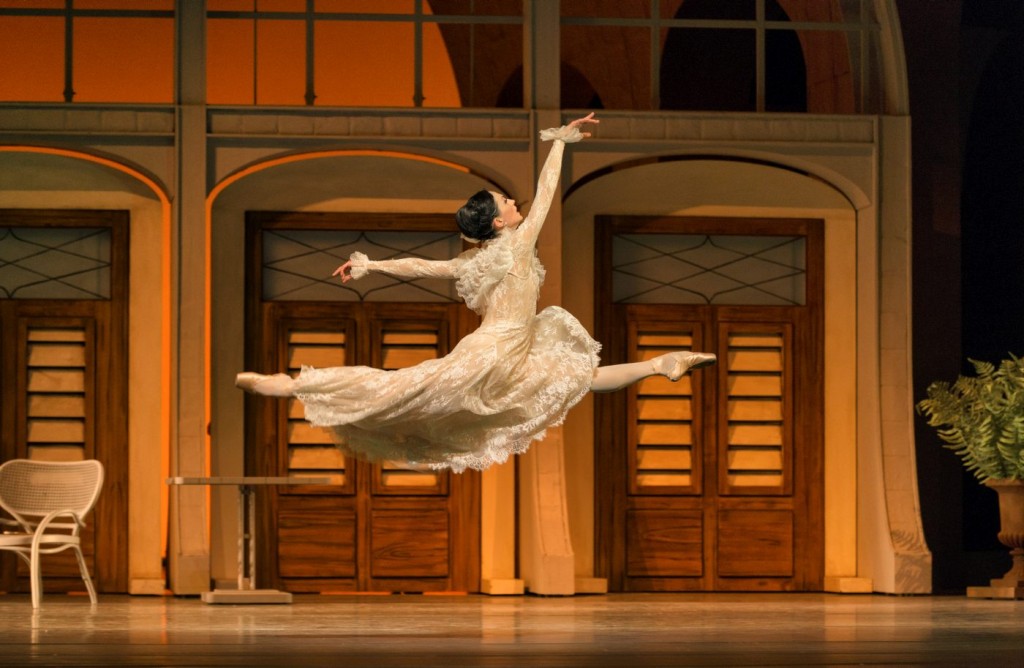 But what caused Mata Hari’s second, dubious career as a spy for the German secret service and possibly also for its French counterpart has never become clear. Certainly she was short of money. Perhaps she thought risky adventures would save her from sinking into oblivion as an artist. Once denounced, was she a sacrificial lamb for the French military court? A scapegoat for France’s defeats and losses? Accused of high treason and double espionage Mata Hari was sentenced to death by a French military court in 1917. After an eight month imprisonment the forty-one-year old was shot by a firing squad that same year.
But what caused Mata Hari’s second, dubious career as a spy for the German secret service and possibly also for its French counterpart has never become clear. Certainly she was short of money. Perhaps she thought risky adventures would save her from sinking into oblivion as an artist. Once denounced, was she a sacrificial lamb for the French military court? A scapegoat for France’s defeats and losses? Accused of high treason and double espionage Mata Hari was sentenced to death by a French military court in 1917. After an eight month imprisonment the forty-one-year old was shot by a firing squad that same year.
The French court files which are to be made public in 2017 will unveil the truth of her spying activities.
Yet hers is an illustrious and dramatic biography, of one stricken by the vicissitudes of life. Attempting to condense this life story into a two-act ballet within a total running time of two hours is brave. But, if one retains too many details, one risks coming up with a piece which occasionally feels like an express train running at full steam. This is exactly what happened in Amsterdam.
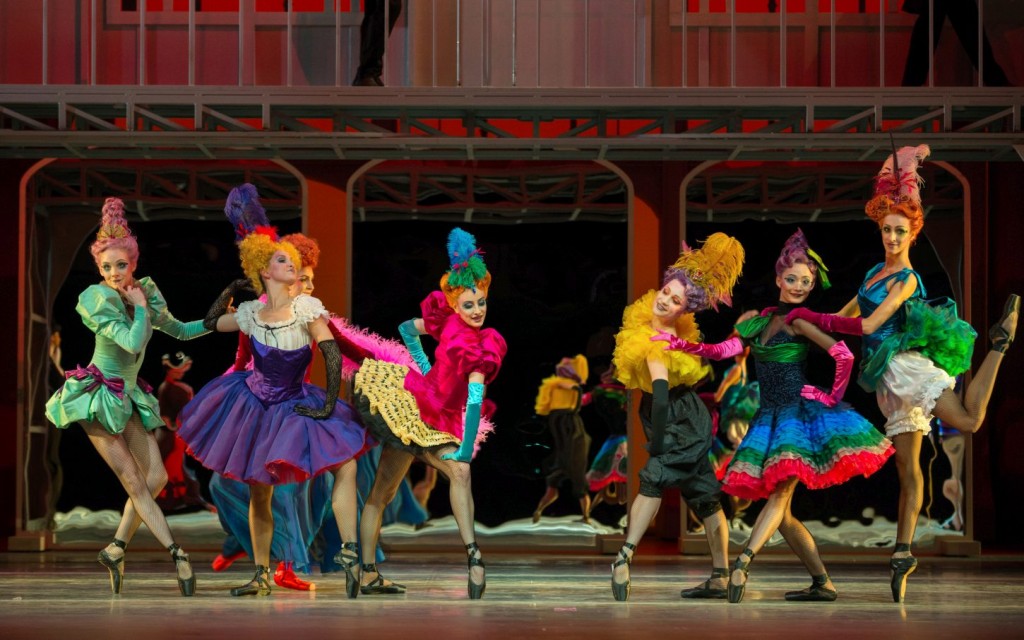 Janine Brogt, who was in charge of the libretto and the dramaturgy, made the story begin with the little girl Margaretha (Claudia Nowak Martinez), reeling through her life and ending with Mata Hari’s execution. Margaretha, abandoned by her father, dislikes her relatives’ rigid social rules. Instead she envies the young and the rich enjoying themselves on the dance floor. We witness her growing up (Later Anna Tsygankova takes over the role, dancing as the adult), her lasting discomfort with her family, her attempt to find work as an artist’s model. Not until she encounters her future husband MacLeod (Casey Herd) does the pace of storytelling slightly slow.
Janine Brogt, who was in charge of the libretto and the dramaturgy, made the story begin with the little girl Margaretha (Claudia Nowak Martinez), reeling through her life and ending with Mata Hari’s execution. Margaretha, abandoned by her father, dislikes her relatives’ rigid social rules. Instead she envies the young and the rich enjoying themselves on the dance floor. We witness her growing up (Later Anna Tsygankova takes over the role, dancing as the adult), her lasting discomfort with her family, her attempt to find work as an artist’s model. Not until she encounters her future husband MacLeod (Casey Herd) does the pace of storytelling slightly slow.
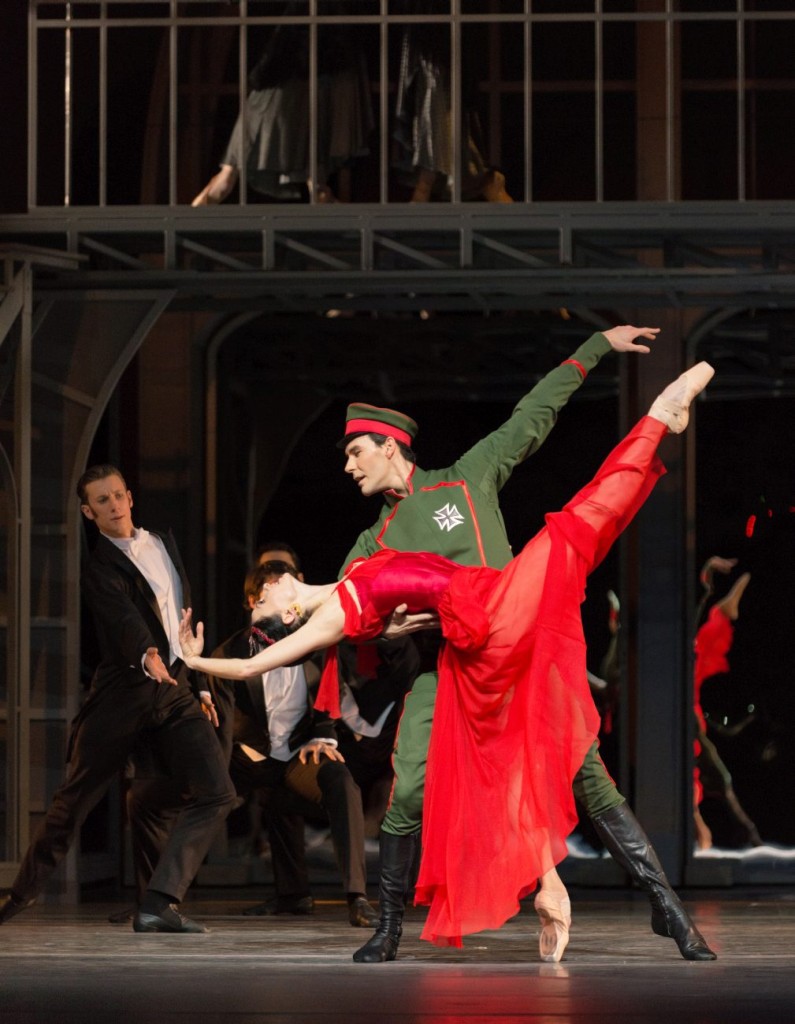 A few pas de deux allow time and space to unfold: one shows Margaretha and MacLeod falling in love, another their aggressive and rough conflicts. Later, in act two, when Margaretha had already metamorphosed into Mata Hari, she has two pas de deux with the Russian officer Vadim de Masloff (Artur Shesterikov) with whom she had seriously fallen in love. The remaining time is densely packed with life events – facts and myths – partly in chronological order, partly rearranged and adjusted. After all Mata Hari herself is known for being inventive with her own biography.
A few pas de deux allow time and space to unfold: one shows Margaretha and MacLeod falling in love, another their aggressive and rough conflicts. Later, in act two, when Margaretha had already metamorphosed into Mata Hari, she has two pas de deux with the Russian officer Vadim de Masloff (Artur Shesterikov) with whom she had seriously fallen in love. The remaining time is densely packed with life events – facts and myths – partly in chronological order, partly rearranged and adjusted. After all Mata Hari herself is known for being inventive with her own biography.
In the ballet Frieda (Emanouela Merdjanova), MacLeod’s sister, makes no mystery of her thorough dislike of her sister-in-law. The marriage becomes disastrous. Norman, the son, is conceived and given birth to on stage. He is the result of marital rape. Later, set in the Dutch East Indies, MacLeod will carry his dead son’s body in front of us on stage. In a scene shortly before, Margaretha had been fascinated by a temple dance of Shiva (Young Gyu Choi) ending with her being initiated into its sacred rituals by him. Or was this only her dream? Later she will recreate his steps in Paris in a lonely solo in Moulin Rouge after just having been refused an engagement. By accident a wealthy patron sees her perform and offers his support. It is the beginning of Mata Hari’s artistic rise. In the first act’s finale Mata Hari does a brief striptease. Then having quickly put on a bright red dress, draped with jewelry, she ends with a triumphant pose over her devotees.
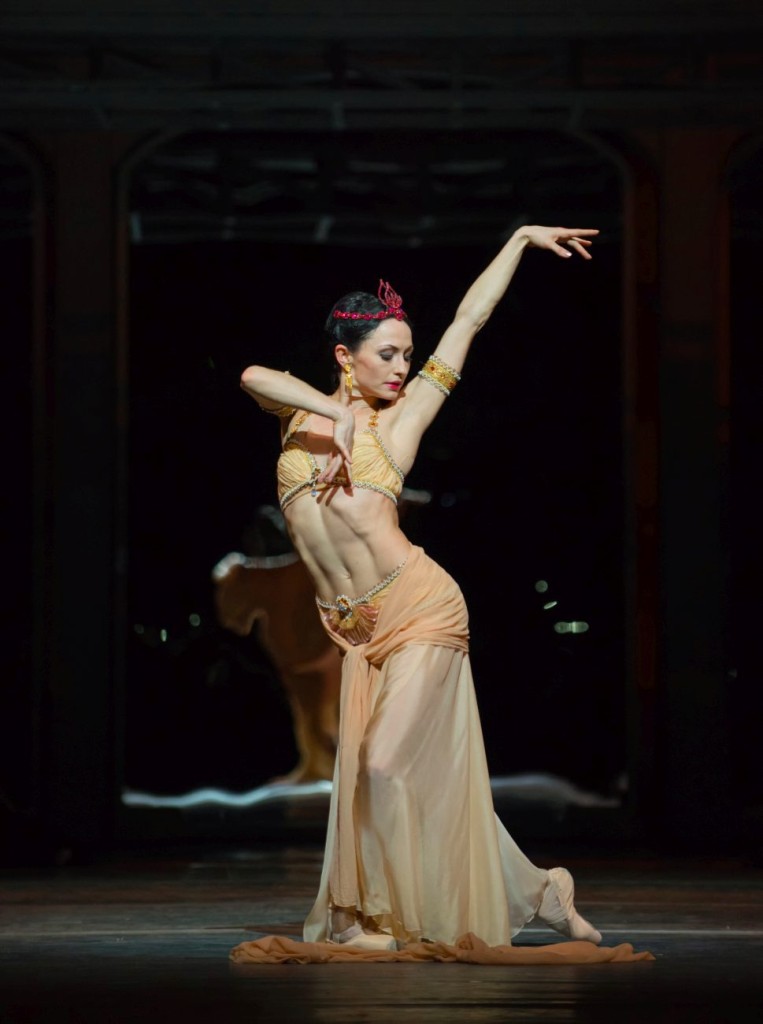 By the break one feels overwhelmed by the vast number of impressions and also by the music, composed by Tarik O’Regan who is British. Too often his sounds are too heavy, pressing ahead to propel the story or keep in step with the swift tempo on stage. A lighter tone would have been better.
By the break one feels overwhelmed by the vast number of impressions and also by the music, composed by Tarik O’Regan who is British. Too often his sounds are too heavy, pressing ahead to propel the story or keep in step with the swift tempo on stage. A lighter tone would have been better.
In the second act an illuminated advertisement at the right front of the stage made up of posters of Mata Hari’s various guest appearances helps one to figure out where what happened. Having at first scored successes, Isadora Duncan (Erica Horwood) steals her show in Vienna. In Berlin, Diaghilev (Sébastien Galtier) gives her the cold shoulder. On the stage’s left corner, a little boudoir allows a peek into Mata Hari’s private life, mainly her love affair with Alfred Kiepert (Jozef Varga), an affluent German general. In the ballet Kiepert ditches her as his lover because of Isadora Duncan but later drags her into spying when she is in need of money. In reality, things were slightly different but equally complicated.
The décor is by Clement & Sanôu who designed a spacious hall with side columns and arches meeting in a vaulted ceiling, reminding one of the inside of a large railroad station. Many side entrances, a movable back wall and openings between the arches allow swift set changes. The basic coloring is light gray which, together with colorful lighting, creates evocatively moody atmospheres.
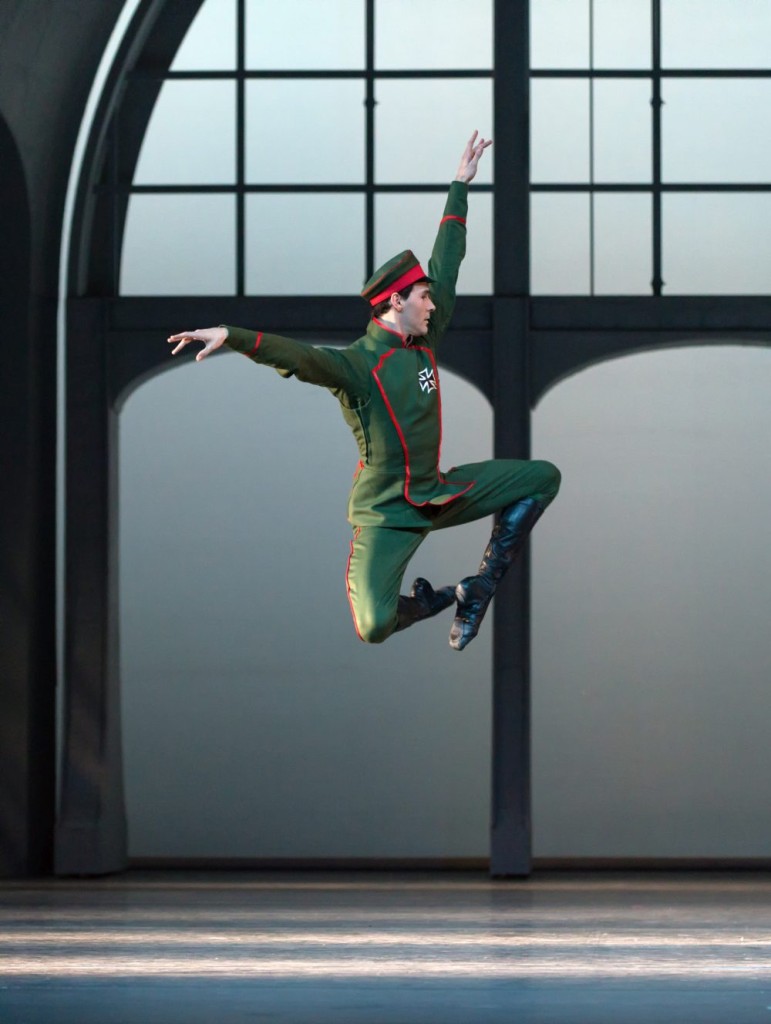 With the outbreak of World War I the huge arches of the ceiling come down, hanging chaotically in the air. The outer world is out of joint as is Mata Hari’s. Finally, maneuvering back and forth between the two warring fronts, she is arrested, cross-questioned by the French lieutenant Georges Ladoux (Roman Artyushkin) and executed by the military. During the cross-questioning Brandsen visualizes Mata Hari recollecting her life by making almost all figures in it pass by her in a line. A well-meant summary, but it felt like a didactic lesson for school kids.
With the outbreak of World War I the huge arches of the ceiling come down, hanging chaotically in the air. The outer world is out of joint as is Mata Hari’s. Finally, maneuvering back and forth between the two warring fronts, she is arrested, cross-questioned by the French lieutenant Georges Ladoux (Roman Artyushkin) and executed by the military. During the cross-questioning Brandsen visualizes Mata Hari recollecting her life by making almost all figures in it pass by her in a line. A well-meant summary, but it felt like a didactic lesson for school kids.
Also a red, long scarf, originally worn by Margaretha’s father, which she also had worn around her neck until her marriage, reappears shortly before her death. A nun in the women’s prison returns it to Mata Hari. After execution, as she lies dead on the floor, the girl playing the young Margaretha (little Claudia Nowak Martinez), returns, picks up the scarf and, jumping around, swings it. Thus the program booklet states “ [Mata Hari’s] dreams and illusions live on”, yet using a red scarf as a common thread is a rather simplistic idea.
As the sprawling story brings together numerous disparate figures, costume designer François-Noël Cherpin and her staff must have been intensely active. They not only sewed austere black robes for Margaretha’s relatives and ecru dresses for the European ladies in the colony but Margaretha had a gorgeous lace one. In addition, there were German and French 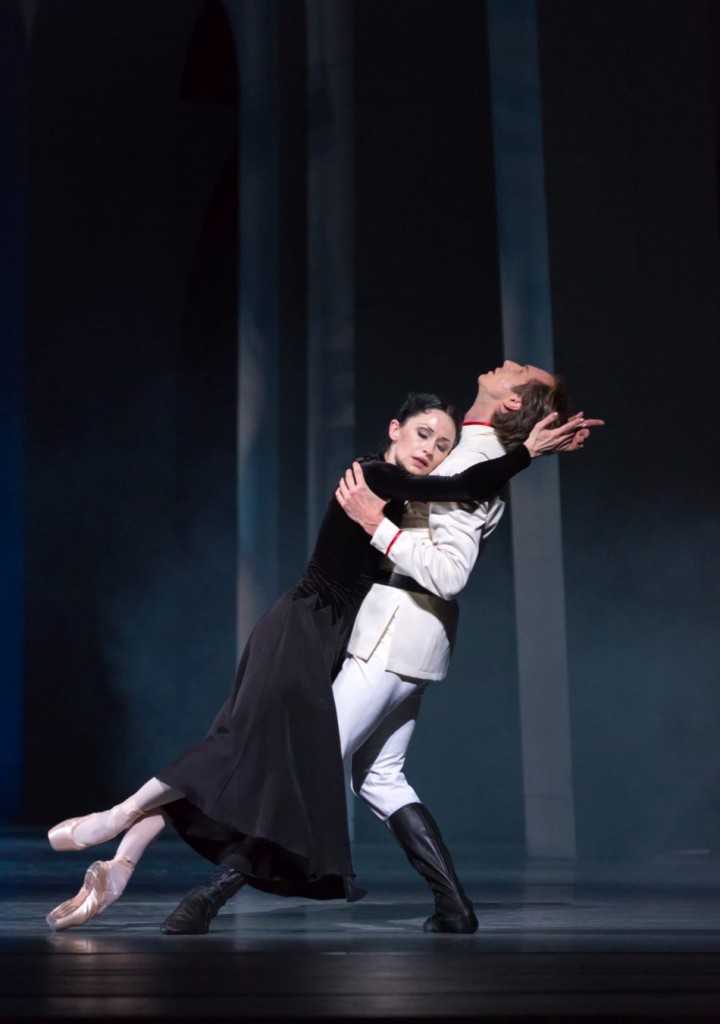 military uniforms, dresses for temple dancers, bustiers and skirts for Mata Hari’s performances within the performance and costumes for the dancers of Diaghilev’s troupe which was shown during rehearsals of “La Sylphide” and “Scheherazade”. The outfits of the Moulin Rouge revelers were by intent overly motley and garish. Reflected by mirrors in the rear wall, they created the impression of a Mardi Gras event.
military uniforms, dresses for temple dancers, bustiers and skirts for Mata Hari’s performances within the performance and costumes for the dancers of Diaghilev’s troupe which was shown during rehearsals of “La Sylphide” and “Scheherazade”. The outfits of the Moulin Rouge revelers were by intent overly motley and garish. Reflected by mirrors in the rear wall, they created the impression of a Mardi Gras event.
Brandsen is a brisk narrator, yet plumbing character psychology is less his metier. He mainly let events and circumstances outline Margaretha’s personal development. Alas! – that isn’t sufficient.
Tsygankova is an excellent dancer with a sure-fire, elegant technique. A subtle actor, she conveyed as much of Mata Hari’s inner life as possible. Yet several times, such as having a decisive idea or making an important decision, she merely had to stand motionless, immersed in her thoughts before being hit by sudden inspiration. There is not much to make out of that. Brandsen described Mata Hari as an iridescent figure but he failed to convince one of her irresistible and mysterious side. What made men fascinated by her isn’t clearly explored.
The choreography is fluent and, particularly in the pas de deux, substantial. Here Brandsen’s language is expressive, clearly characterizing the relationships. Group dances are seamlessly woven together but sometimes they are too facile and 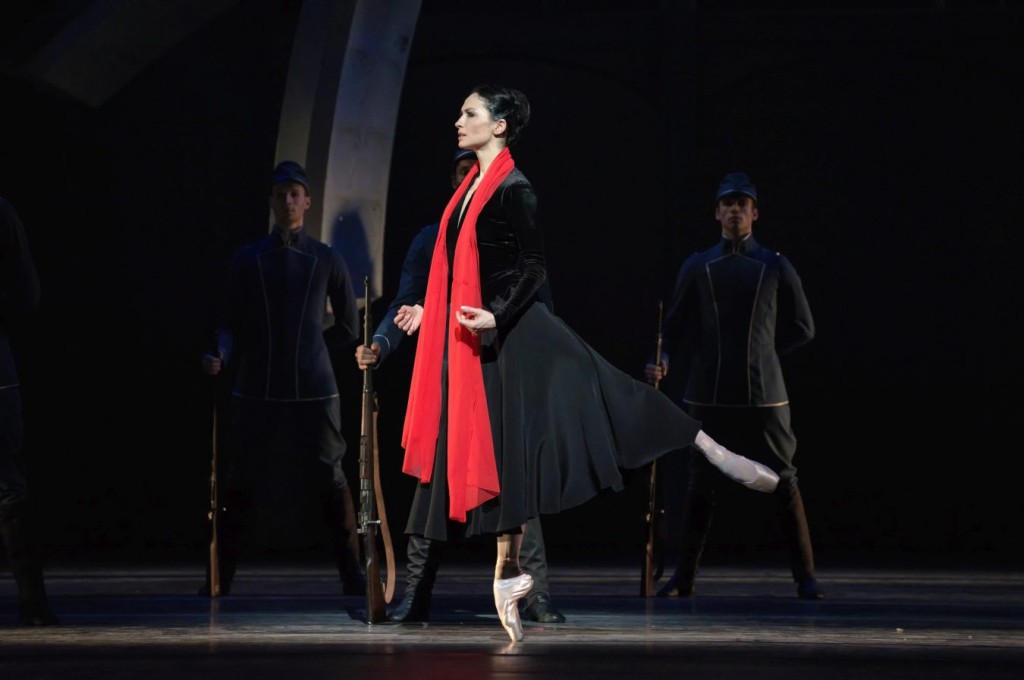 predictable. In some cases it also seems as if occasions involving the corps are contrived rather than essential elements in furthering the story. “Mata Hari” reminds one of an adroitly crafted musical, only without singing. Representing a part of Dutch history, it will surely attract an audience there. At the curtain calls last Saturday, all rose off their seats at once for a standing ovation.
predictable. In some cases it also seems as if occasions involving the corps are contrived rather than essential elements in furthering the story. “Mata Hari” reminds one of an adroitly crafted musical, only without singing. Representing a part of Dutch history, it will surely attract an audience there. At the curtain calls last Saturday, all rose off their seats at once for a standing ovation.
The entire cast danced admirably. They are energetic and technically assured. Everyone had made their role their own. The Dutch Ballet Orchestra, playing with full commitment, was under the baton of Matthew Rowe who seemed relieved at the curtain call to have successfully navigated through the forceful score.
| Link: | Homepage of Dutch National Ballet | |
| Photos: | 1. | Anna Tsygankova (Margaretha) and ensemble, “Mata Hari” by Ted Brandsen, Dutch National Ballet 2016 |
| 2. | Anna Tsygankova (Margaretha) and Casey Herd (Rudolf MacLeod), “Mata Hari” by Ted Brandsen, Dutch National Ballet 2016 | |
| 3. | Anna Tsygankova (Margaretha) and Young Gyu Choi (Shiva), “Mata Hari” by Ted Brandsen, Dutch National Ballet 2016 | |
| 4. | Anna Tsygankova (Margaretha), “Mata Hari” by Ted Brandsen, Dutch National Ballet 2016 | |
| 5. | Ensemble, “Mata Hari” by Ted Brandsen, Dutch National Ballet 2016 | |
| 6. | Anna Tsygankova (Mata Hari) and Jozef Varga (General Kiepert), “Mata Hari” by Ted Brandsen, Dutch National Ballet 2016 | |
| 7. | Anna Tsygankova (Mata Hari), “Mata Hari” by Ted Brandsen, Dutch National Ballet 2016 | |
| 8. | Jozef Varga (General Kiepert), “Mata Hari” by Ted Brandsen, Dutch National Ballet 2016 | |
| 9. | Anna Tsygankova (Mata Hari) and Artur Shesterikov (Vadim de Masloff), “Mata Hari” by Ted Brandsen, Dutch National Ballet 2016 | |
| 10. | Anna Tsygankova (Mata Hari) and ensemble, “Mata Hari” by Ted Brandsen, Dutch National Ballet 2016 | |
| 11. | Anna Tsygankova (Mata Hari) and ensemble, “Mata Hari” by Ted Brandsen, Dutch National Ballet 2016 | |
| all photos © Marc Haegeman 2016 | ||
| Editing: | Laurence Smelser |
